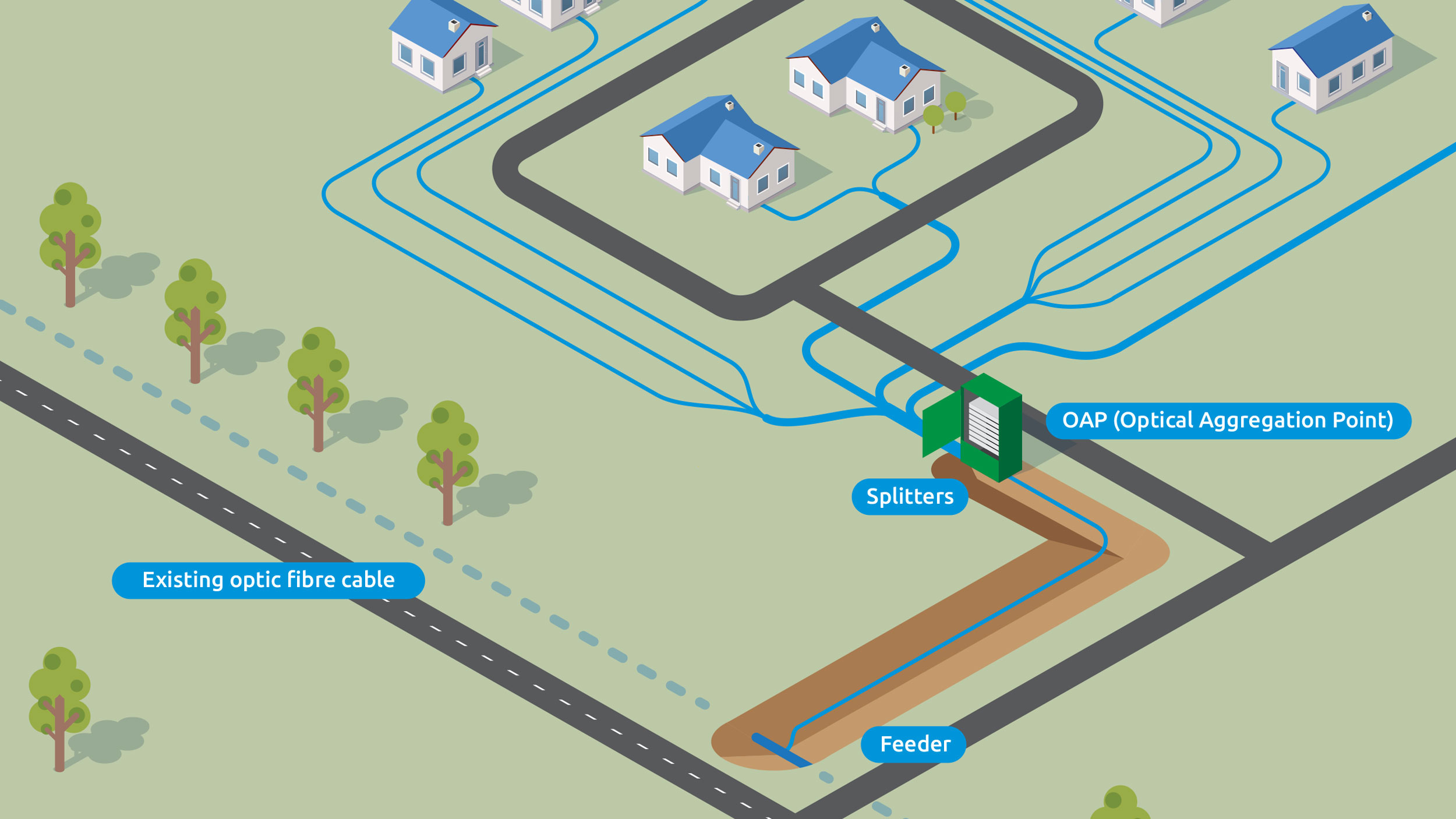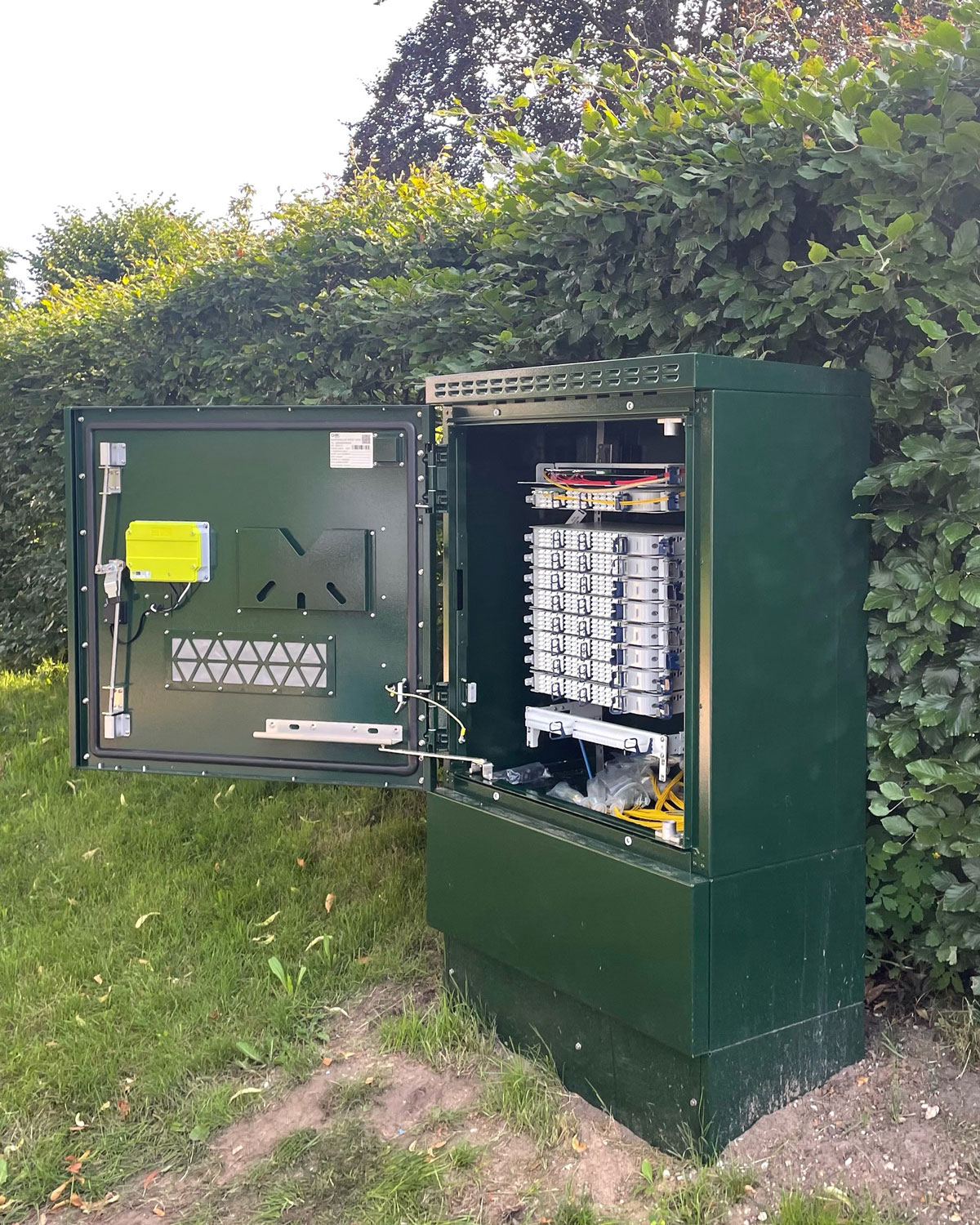Installation of fiber optics based on current KPN infrastructure
Allinq pioneer in Brownfield
Using the existing Fiber infrastructure for new Fiber to the Home (FttH) connections? It is possible. On behalf of KPN, Allinq is responsible for these Brownfield connections for the whole of the Northern Netherlands. A unique assignment, says Harry Selles.
“We do the entire implementation: the preliminary investigation, the testing of the connections, the installation of the street cabinet, the construction of the feeder, the installation of the equipment in the district exchange and street cabinet, the house connections, and the management and maintenance. That’s unique. Other companies only have part of that expertise in-house,” says Harry. He is ultimately responsible for this assignment at Allinq and in this article takes us along in this pioneering adventure.

Greenfield versus Brownfield
Where first new fiber optic cables were installed everywhere, Allinq now uses the cables that are already in the ground. Harry: “With Greenfield everything is newly constructed, while with Brownfield you build on the existing assets. Reusing the infrastructure, such as pipes and glass fibers, is more sustainable and cheaper. Tests showed that you can use the existing, so-called backhaul network for the construction of a new optical aggregation point (OAP), the street cabinet from which the various households are served.”
Pilots
Because the Brownfield approach is new, Allinq started three pilot projects in the east of the Netherlands, in the villages of Hoog Soeren, Hoenderloo, and Klarenbeek. The first challenge was to test the routes. Harry mentions Hoog Soeren as an example: “If we could also provide the OAP in Hoog Soeren from the existing fiber optic cable from Apeldoorn-West to Hoog Soeren, we could provide all 136 households there with FttH. The test showed that the fibers in the route from Apeldoorn-West to Hoog Soeren met the attenuation standard and that all signals were positive for the roll-out.” The roll-out consists of four phases: placing the street cabinet, laying the feeder up to the street cabinet, equipping the equipment in the street cabinet with the correct splitters, and laying the fiber optic cables up to the house.
Harry looks back on the beginning with satisfaction. “We started the Brownfield project in November 2021. A year later, the test phase has largely been completed and we can make progress with the construction of OAPs. In the meantime, more than a hundred routes have already been tested and are ready for roll-out.”

“We are constantly looking into how we can make work processes smarter”
Weekly meeting
Harry is happy with the good cooperation with client KPN and competitor VolkerWessels Telecom, which is responsible for the connections in the south of the Netherlands. Every week they have constructive meetings. “In the Netherlands, there is not only a great demand for fast internet, but also for the construction of charging stations and solar panels, for example. This puts considerable pressure on civilian capacity. We are therefore constantly investigating how we can make work processes smarter.”
Flywheel effect
Pioneering pays off in a flywheel effect. More and more rural areas in the Netherlands are now also connected to fiber optics. In five years’ time, fast internet will be commonplace in almost all of the Netherlands, Harry expects. And then? “At Allinq we don’t have to sit and wait,” he laughs. Naturally, management and maintenance are necessary, but technology does not stand still either. “Employees work passionately on innovations every day in our beautiful lab. Innovations to further improve the telecom industry above and below ground.”
